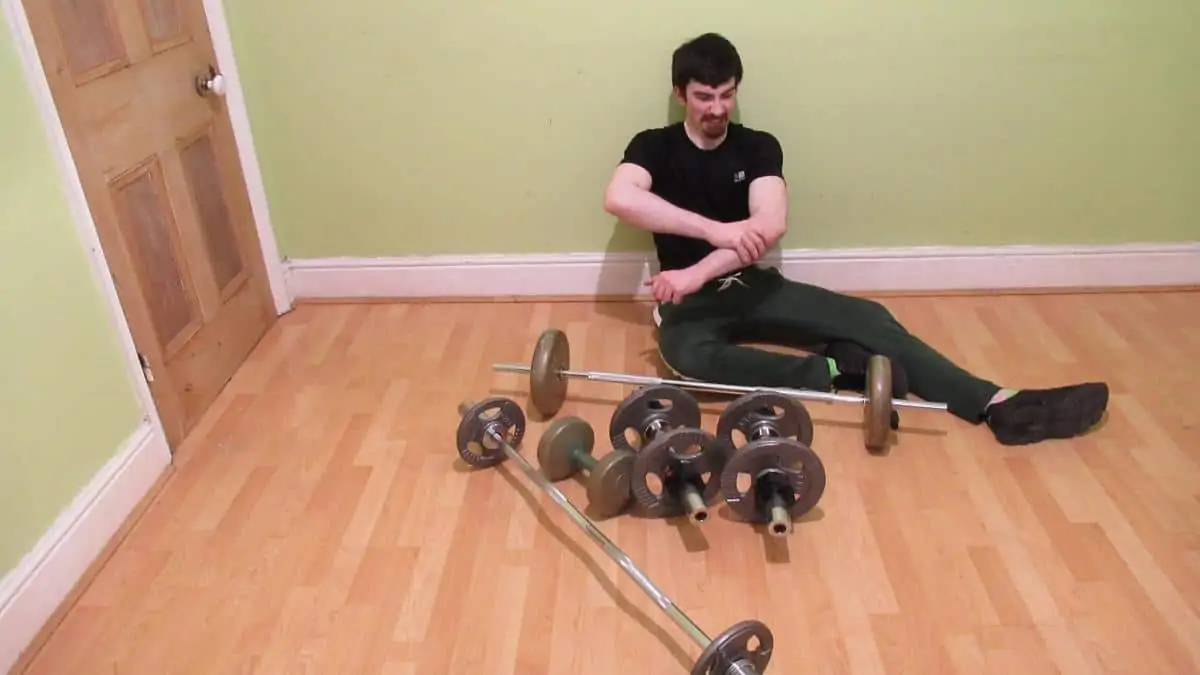The forearm muscles can often become inflamed from lifting weights if you don’t allow for sufficient recovery between workouts or if you use poor form. There are also other causes, which we’ll discuss soon, that are indicative of more serious medical conditions.
So if you have forearm pain from lifting weights, be sure to carefully assess the potential causes and treatment options to understand why you might be experiencing such discomfort. Also, make sure to talk to your doctor before proceeding with any treatment plan or before going back to the gym.
Related posts: forearm hurts during pull ups │forearm rehab drills
What causes forearm pain from lifting weights?
If you’re experiencing forearm pain after lifting weights, then it could be due to something as simple as muscle soreness. However, if your pain is particularly intense, then it could be a sign of a more severe problem.
Delayed onset muscle soreness
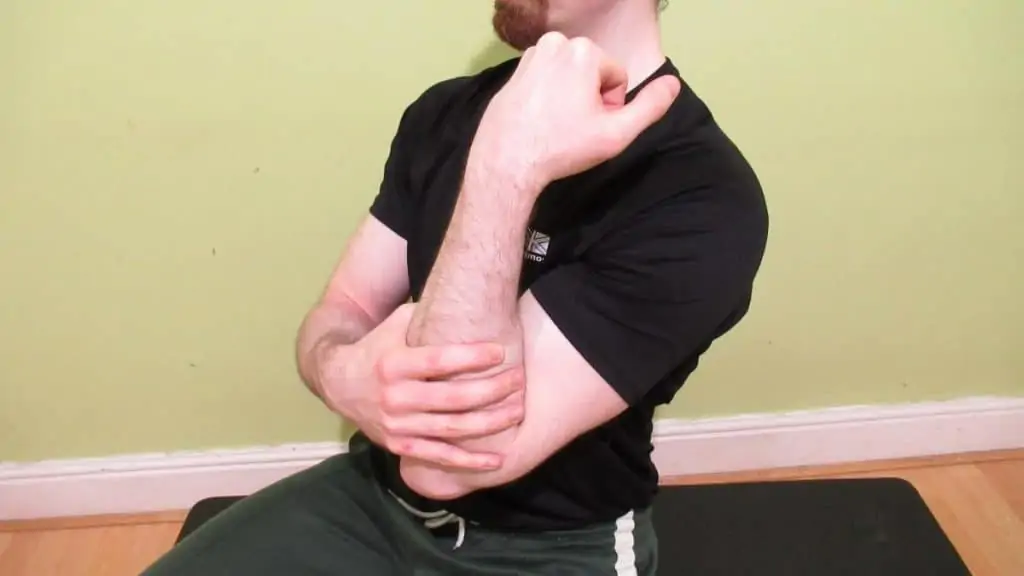
Every gym-goer has experienced delayed onset muscle soreness (DOMS) at some point during their training career. This phenomenon usually manifests itself 24-48 hours post-workout and can last anywhere from a few days to over a week. If your training session causes a lot of muscle damage, then the aching sensation will generally last longer.
If you’re new to lifting weights and haven’t had DOMS before, then you may well think that your soreness is due to something more serious. However, if the ache in the muscle belly becomes progressively less intense, that’s a good sign that you’re experiencing regular muscle soreness and not something more serious.
After all, general strength training with good form can actually lessen forearm pain. [1]
Incorrect lifting technique

If you have pain in your forearm muscle when lifting weights, then it could be due to poor form. And if you look around the gym, you’ll realize that incorrect technique isn’t uncommon. If you leave your forearm in an awkward position, then it may be subjected to too much stress and thus become injured.
For example, if you feel forearm pain when doing bicep curls, then it’s a good idea to use dumbbells rather than barbells because your forearm can’t rotate when performing standard barbell curls. This leads to excessive strain of the forearm flexors and, eventually, to tendonitis.
You can also get forearm splints from working out by doing too much training volume, which is the amount of sets and reps that you perform in a given workout, week, or training cycle. Sooner or later, our bodies will feel discomfort due to sheer exertion even if we use proper form.
Lifting too heavy
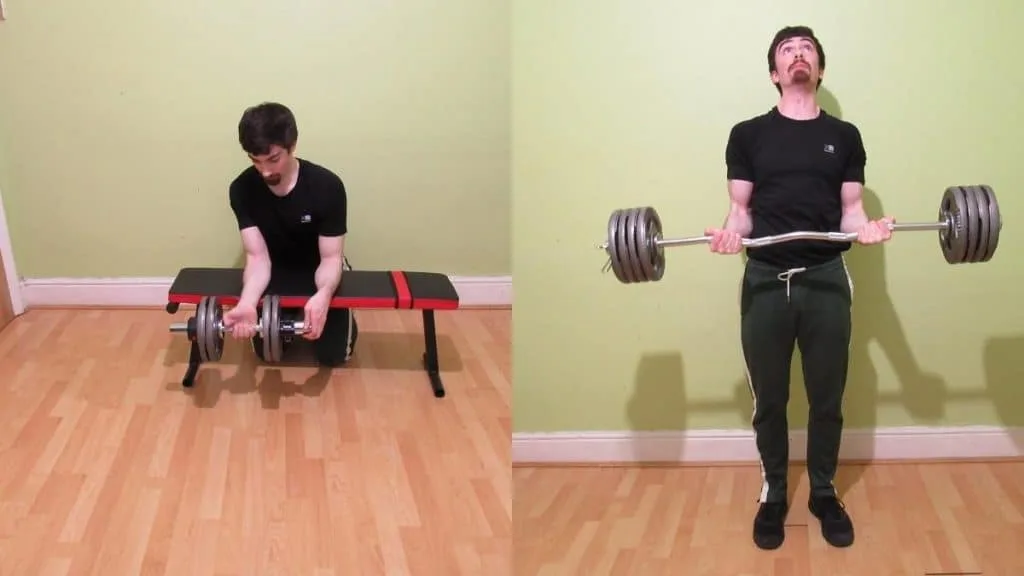
If your forearm hurts when lifting, then the weights may simply be too heavy for you. In back and bicep training, for example, it can be tempting to involve other muscles during your reps in order to lift heavier weights.
However, this means that you’re lifting heavier weights than the target muscles can handle, which means that you’re forcing them to cope with more stress.
This approach to weight training can result in forearm pain because by ego lifting, you haven’t yet built up sufficient strength in what are very small and weak muscles, especially in comparison with the larger muscles of your body.
Overuse injuries
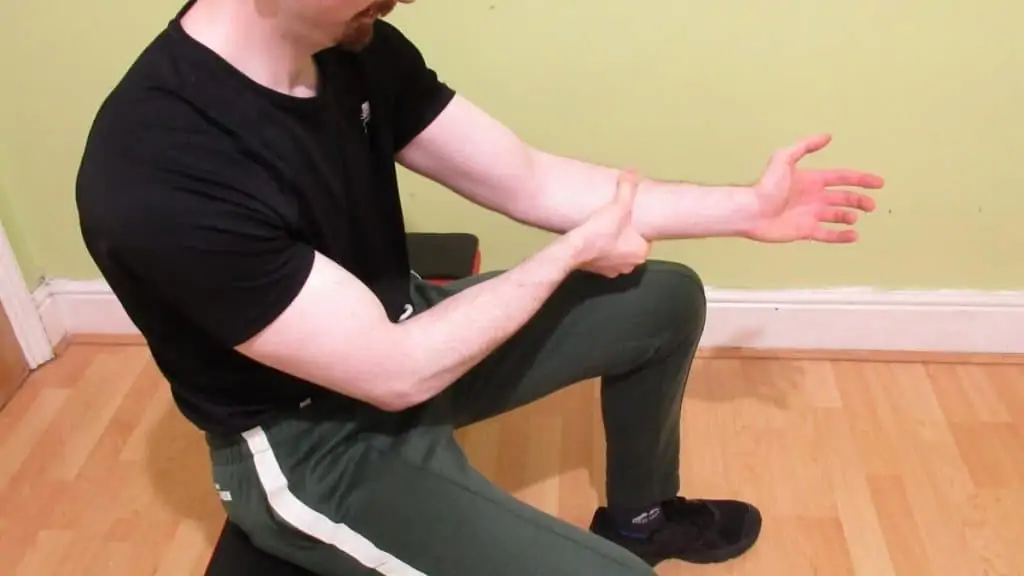
Why does my forearm hurt when I lift even though I use the proper form? We hear this question a lot. And overuse injures are a typical cause.
Performing repetitive motions for many sets and reps can result in forearm pain. Biceps curls are a great example of this because unless you use dumbbells and rotate your forearm during each rep, you can subject your forearm flexors to more stress than they can realistically handle.
Likewise, since we use the forearms in virtually every upper body exercise, they can quickly become injured due to repetitive gripping motions if you don’t scale back your training volume.
Read more: brachioradialis pain and swelling │forearms hurts while gaming
How can you treat weightlifting forearm pain?
Traditional weightlifting forearm pain is best treated through rest because overuse injuries are one of the most common causes of lower arm discomfort in the gym. However, there are other measures that you can take to prevent the problem from reoccurring.
RICE
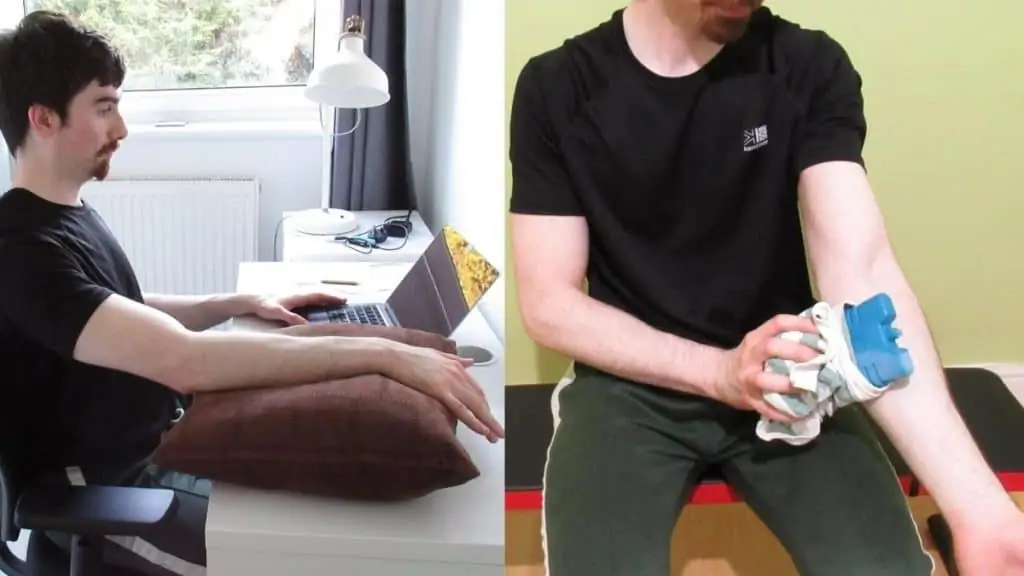
Rest, Ice, Compression, and Elevation (RICE) is a proven recovery technique that helps to treat sporting injuries, among other muscular problems. Begin by simply resting your forearms. Don’t go to the gym until the initial pain subsides. Also, try to avoid spending excessive time on the computer or similar electronic devices as this can worsen your forearm pain. [2]
From there, you can ice the affected area and also attach a medical bandage to provide your limb with some compression, which in turn improves blood flow to your damaged connective tissue.
Similarly, try and elevate your lower arm because research shows that elevation above your heart can reduce swelling and inflammation.
Swap problematic exercises

If a given exercise is causing you forearm pain, then replace it and see if the problem persists. As a general rule, movements that have your wrists in a neutral position are easier on the forearms (and the shoulders, too) because they don’t subject the flexors to persistent stretching and contracting.
Instead, your bigger, stronger brachioradialis takes more of the strain, which actually helps you to lift heavier weights.
Stretch the affected area

A tight forearm muscle can be rectified via forearm self massage or foam rolling in between workouts. However, if you don’t have the equipment, this method of recovery can be inconvenient.
So performing some of the best forearm stretches that are available is an ideal alternative. These drills can help to reduce the tension in your lower arms and alleviate any discomfort.
Check for other causes

If you also experience pain in your forearm from typing and similar activities, then lifting weights may not be the sole cause of your discomfort.
Perhaps the pain is simply manifesting itself in the gym, as that’s where your lower arms are naturally subjected to the most tension?
You may also have painful forearms from fibromyalgia. However, in our modern lives, it’s becoming increasingly common for office workers to experience forearm pain, and that discomfort often carries over to other parts of our lives, such as weight training.
Weight lifting forearm pain FAQ

Why do I get forearm pain when lifting objects in the gym?
Some objects are more awkward to lift than others. This can put your forearms in a compromising position where they’re forced to handle more resistance than they’re capable of lifting.
Also, weight training is a repetitive activity, and so pain can occur if you perform too many sets of a given movement pattern.
Why do I get a sharp pain in my forearm when lifting weights?
If you are lifting heavy weights, then your lower arm can get strained from being subjected to too much resistance. You can see our forearm strain treatment for more info, but it’s possible that the pain could be caused by something else and that the exercise is simply bringing that discomfort to your attention. [3]
I have forearm pain near my elbow from weightlifting. What could be the cause?
If you feel upper forearm pain when gripping weights in the gym, this could be because you’re doing too many pulling exercises in your workout regime. You may also not be doing enough warm-up sets, and so your elbow and upper forearm could be getting subjected to too much stress before the joints and tendons are sufficiently lubricated.
How long does weightlifting forearm pain last?
Depending on the severity of your condition, most weight lifting forearm pain will last from a couple of weeks up to several months. Ensure that you rest the affected area so that it’s fully recovered. Getting adequate rest also minimizes the chance of you experiencing any future flare-ups because it increases the likelihood that the pain site will be fully (rather than just partially) recovered when you go back to the gym.
Read more: cramping in forearms
Conclusion: Preventing pain in your forearm when lifting weights
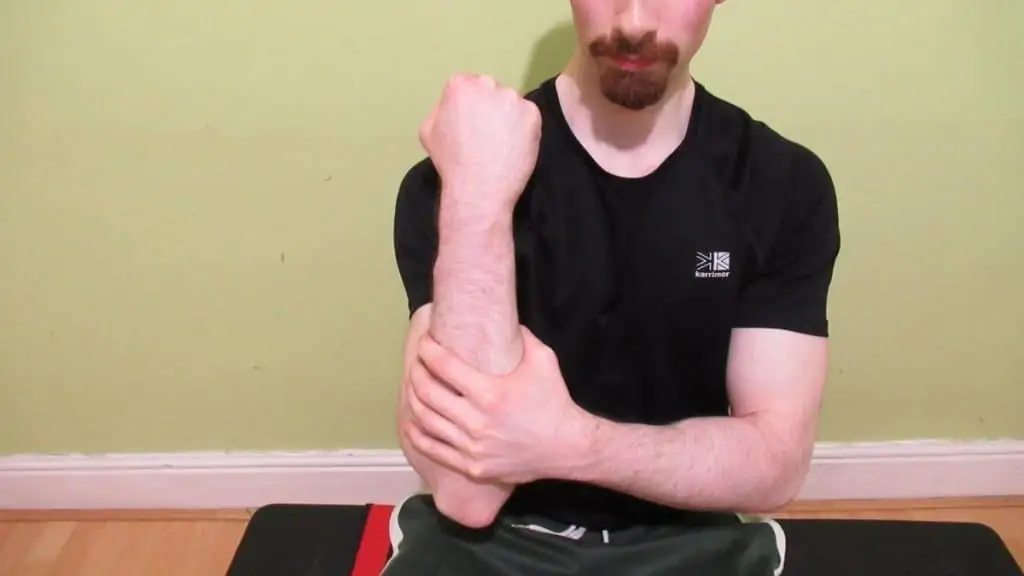
Always consult with your doctor to determine if you genuinely have forearm pain from lifting weights or if the resistance training is simply worsening a pre-existing condition.
Also, keep in mind the critical importance of rest and recovery. Just because your forearm doesn’t hurt during your daily life doesn’t mean that it won’t hurt in the gym. The last thing that you want is a regular bout of pain turning into a more serious medical condition, so don’t be tempted to get back in the gym any sooner than your doctor or physiotherapist recommends.
References
- Andersen, L. L., Jakobsen, M. D., Pedersen, M. T., Mortensen, O. S., Sjøgaard, G., & Zebis, M. K. (2012). Effect of specific resistance training on forearm pain and work disability in industrial technicians: cluster randomised controlled trial. BMJ Open, 2(1), e000412. https://doi.org/10.1136/bmjopen-2011-000412
- Kryger, A. I. (2003). Does computer use pose an occupational hazard for forearm pain; from the NUDATA study. Occupational and Environmental Medicine, 60(11), 14e–114. https://doi.org/10.1136/oem.60.11.e14
- Macfarlane, G. J. (2000). Role of mechanical and psychosocial factors in the onset of forearm pain: prospective population based. BMJ, 321(7262), 676. https://doi.org/10.1136/bmj.321.7262.676

